|
Andrez BERGEN signe un portrait intéressant et presque inattendu d’OSHII Mamoru, à la veille de la sortie
du second opus de Ghost in the Shell au Japon. On y découvre notamment un OSHII fasciné par Jean-Luc GODARD, mais aussi
par la Bible et MIYAZAKI Hayao. Se dégage donc de ce portait l’image d’un homme solitaire, loin de tous ses confrères,
au même niveau d’excellence que le réalisateur de Totoro et hanté par des imageries bizarres et iconoclastes.
Bref, ça ressemble bien à l’idée que l’on se fait d’OSHII. Un deuxième papier du même site vient compléter
ce portrait. Intitulé The Dolls that inspired the creator of ‘Innocence’, il est signé de la main de Asami
NAGAI. On y découvre, fasciné, qu’OSHII a commandé à NAKAMURA Nerou, un créateur de poupées, des modèles utilisés dans
Innocence. S’ensuit alors un parallèle entre l’aspect humain, et donc malsain se dégageant d’une
poupée, et l’utilisation faite dans le film, dans lequel le cyborg est lui aussi une copie de l’Homme. Un article
troublant et tout à fait intéressant, nous donnant encore plus l’envie de découvrir le film du maître.
Lire
le premier article : http://www.yomiuri.co.jp/newse/20040304woa1.htm
Lire le deuxième : http://www.yomiuri.co.jp/newse/20040304woa2.htm
NEW LINKS (2006):
mamoru oshii on 'tachiguishi retsuden'
kenji kawai on his soundtracks for oshii
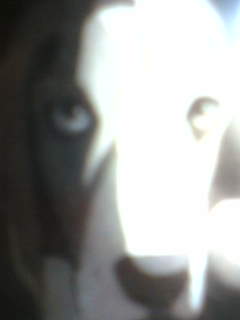
the following
is an interview article
published in
the daily yomiuri (tokyo)
in march 2004
title: the age of innocence
writer: andrez bergen
translator: maki terashima-furuta
What other nation in the world annihilates
its own capital as much as Japan? Think of all the times Tokyo's been trashed, caned, victimized and atomized - from the big
bang at the beginning of Katsuhiro Otomo's 'Akira' (1988), to nearly every single Godzilla flick etched out by Japan's workhorse
production house Toho Co.
Both the manga comic and the animation movie - known simply as anime in Japan - of 'Kokaku Kidotai' ('Ghost In The Shell')
continued this trend, setting the scene some time after World War 5. The twist here was that Tokyo was a city that had revived
itself and embraced a slick, somewhat violent sci-fi futurism. Yet while the manga pages drawn by Shirow Masamune were also
quirky, humorous, and occasionally perverted, the anime movie interpretation, released in 1995, was darker, a tad more cerebral,
and the most innovative post-cyberpunk anime since 'Akira'.
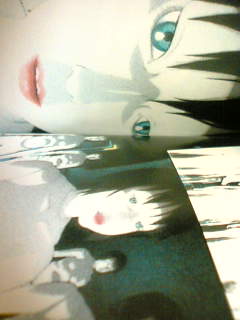
Ostensibly the story of a public security anti-terrorist squad (Section 9) coming to grips with an unknown force who is "ghost-hacking"
into cyborgs' brains and souls, 'Ghost In The Shell' drifted into a philosophical treatise on the nature of humanity and its
relationship with technology. If any one movie was responsible for impacting upon the latent psyches of the Warchowski brothers
before they produced 'The Matrix', this was it. While the movie was drafted by Masamune and co-scripted by Kazunori Ito, the
director was one Mamoru Oshii.
So far as Japanese anime directors go, it's Hayao Miyazaki who is the current international golden boy (ironically at
age 63) thanks to last year's Oscar for Best Animated Feature for 'Sen to Chihiro' ('Spirited Away'). Yet as he was receiving
that award, and while Shinichiro Watanabe tweaked two segments in last year's 'Animatrix' during the 'Matrix' sequels hype,
Mamoru Oshii was quietly helming the production of his own long-awaited sequel.
'Innocence: Ghost In The Shell' will be released in cinemas this weekend. "The setting takes place three years on
from the first movie, but they are completely different," Oshii asserted through a translator, during a break in production
in December last year.
On this feature Oshii worked with Production I.G., a studio renowned right now for their anime sequences in Tarantino's 'Kill
Bill' double-act. "It's like my home," Oshii declared of the company in enthusiastic tones. "It's like Manchester
for Manchester United, and Hamburg for HSV [the soccer teams]. They know the pitch in whatever condition and situations. However,"
he added meaningfully, "it doesn't necessarily mean that I can do anything I want to at I.G."
Hayao Miyazak's Studio Ghibli coproduced the movie - the culmination of a long-time conspiracy between Miyazaki and Oshii
to work together. "I know him too well!" Oshii retorted, with obvious warmth. "It's impossible to think of
him and his work as two separate things. I respect all his work, but it differs from mine. I could explain it, but it will
probably take me at least overnight."
Those differences are visual as well as philosophical. Miyazaki prefers more conventional hand-drawn 2D animation, whereas
Oshii has set the bench-mark for the fusion of 2D with 3D computer graphics, particular in past projects he's been involved
with such as 'Jin-Roh' (1998), 'Blood: The Last Vampire' (2000), and 'Avalon' (2001). With 'Innocence' it's obviously his
intent to the raise the standard further still.
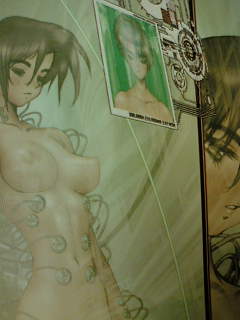
ABOVE: a clip from original manga creator Shirow Masamune's "Man-Machine Interface"
While Miyazaki juxtaposes concerns with the environment over a strange blend of whimsy, humor, adversity and triumph of the
spirit, Oshii's films are often dark, bleak and caustic, with a resounding reliance upon technology.
What Oshii and Miyazaki do share is a predilection for tales in which there is no specifically "bad" character
- even the perceived villains often struggle for something they think is right. But whereas in Miyazaki's realm this means
good intentions, in Oshii's it's a need to know the unknown, to succeed at any costs, and often inspired by baser qualities.
And the fact is that Mamoru Oshii is by no means a young upstart with a hidden agenda to ride on the coattails of Miyazaki's
own success. Born in 1951, he graduated from an art academy in Tokyo, and as a student delved into filmmaking. "I was
fond of European movies - I repeatedly watched Antonioni, Fellini, Melville and Bergman," he recalled. "But now
I think back, I feel that Godard is the one and only director."
In 1980 Oshii joined Studio Pierrot and two years later, with artist Yoshitaka Amano, created the surreal anime 'Tenshi
no tamago' ('Angel's Egg'). The movie carried with it an inclination towards Christian iconography, and this has proved an
ongoing theme in Oshiiís work, as both 'Ghost in the Shell' and 'Patlabor' cite quotations from the Old and New Testament.
While he readily admitted that he's been perusing the Bible ever since his youth - and that he once planned to enter a seminary
- Oshii says now that he does not regard himself as a Christian; that his interest in the Bible is purely for philosophical
and inspirational purposes.
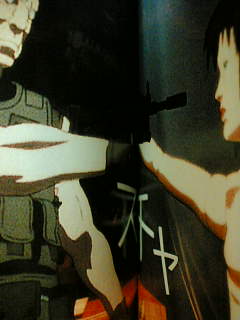
His approach is probably timely. The prevailing image of Japanese anime in the West has been one of simple design, characters
with huge eyes and hair awry, and generally shoddy background muzak. It's also been increasingly associated with two Japanese
words that would seem contradictory in any other language: "kawaii" (cute) and "hentai" (perverted).
Oshii's work, however, steers clear of such stereotypes in both image and sexual orientation. His movies are dark, thought-provoking,
minimalist diatribes with an underlying complexity; at the same time he pushes the perimeters of technology when it comes
to the medium itself. Character design plays equitable importance. On 'Innocence' he worked again with Hiroyuki Okiura - who
did the designs for the first movie and also directed the Oshii-scripted 'Jin-Roh'.
And mind-numbing music is another pigeonhole Oshii successfully evades. His regular composer is Kenji Kawai - who worked
with him on 'Ghost In The Shell', 'Avalon' and 'Patlabor'. For the new movie Kawai inducted jazz chanteuse Kimiko Itoh to
revamp her standard 'Follow Me' into an ethereal aural backdrop. "I haven't thought about using any other composer but
Kenji," Oshii advised in somewhat reverential fashion.
Throughout his own labor it's apparent that Oshii is influenced more by European culture than American or even Japanese
elements. He assimilated the Brothers Grimm tale of Little Red Riding Hood into his script for 'Jin-Roh', while Arthurian
legends and possibly Russian director Andrei Tarkovski helped shape much of the symbolism inherent in 'Avalon'.
While predominantly a live-action piece framed by computer-generated imagery, 'Avalon' ushered in a realm in which statues
have no faces, books are filled with empty pages, and dogs go mysteriously missing - to end up on symphony recital posters.
The result is stunning.
Oshii filmed that movie in Poland, with a Polish cast. "Shooting it in Japan was impossible," he advised, "and
I didn't think of using a Japanese cast. I considered shooting in the UK or Ireland, but the towns and scenery in Poland matched
my image for the movie."
There were also ulterior motives. "I loved Polish movies as a student, and I've learned to enjoy the sound of the
Polish language. The reality of the country itself was so close to the imaginary world of Avalon - and they allowed us to
use former Russian tanks, choppers, and guns."
If there's one central impetus in Oshii's life and work, however, it's something unexpected; something I accidentally
unearthed in the process of asking about any intentional mischief on his part for the recurrent bloodhound dog that appears
in 'Avalon', 'Ghost In The Shell', and the promotional poster and theatrical trailer for 'Innocence'.
"They're actually bassett hounds," he corrected me, and it turned out that he owns two of the dogs himself.
"There's absolutely no doubt that they're extremely important to both my movies and my life." It came as no surprise
then, when asked about his further plans for 2004, Oshii quipped: "I have no idea. I'd like to go home and spend some
time with my dogs."
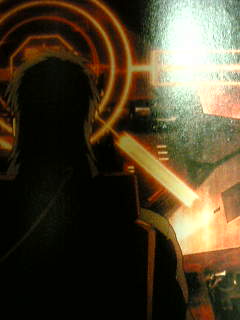
|

